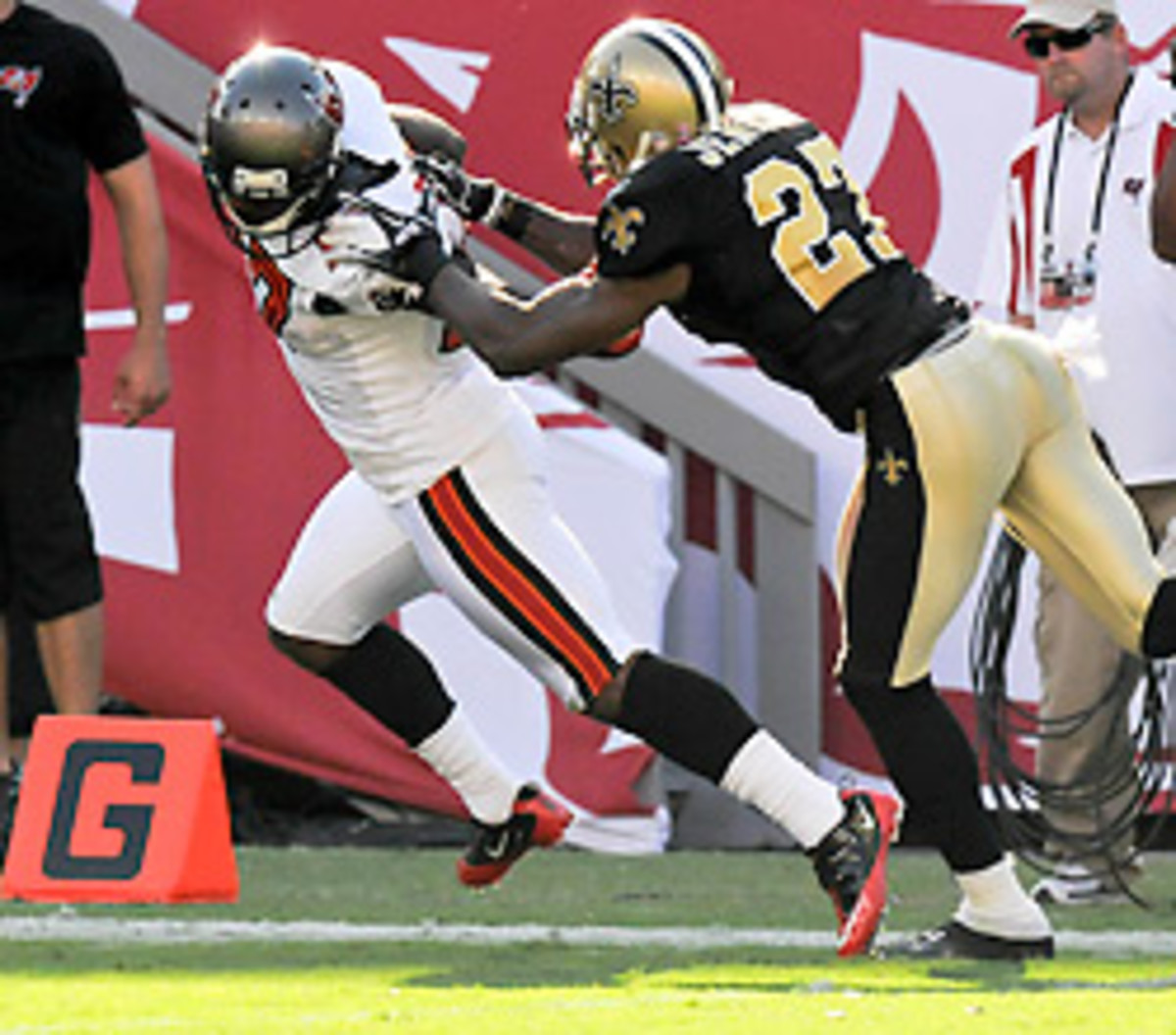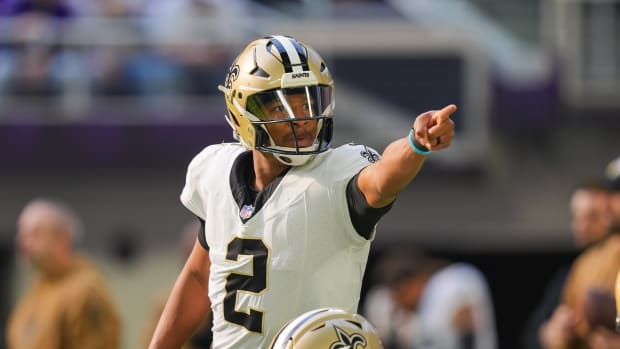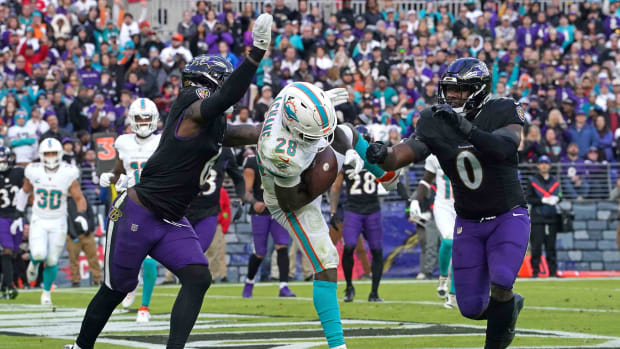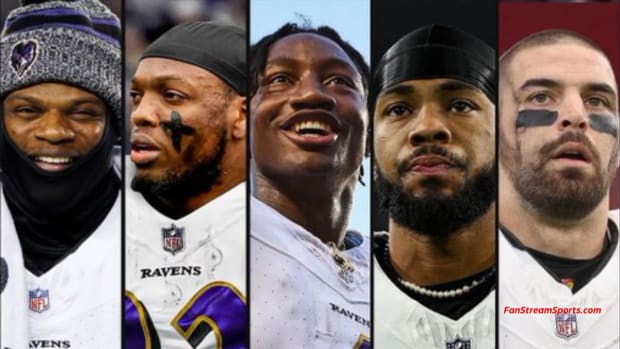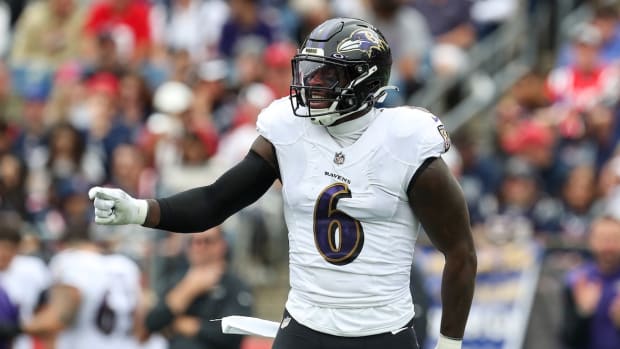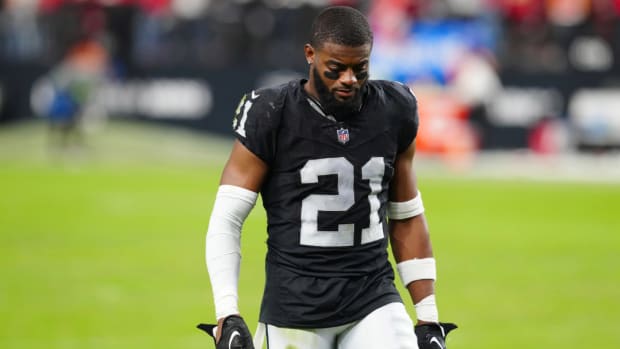Break It Down: Josh Freeman shreds Saints' D
Coverage problems and a lack of pressure from the Saints doomed them against the Bucs. (Fernando Medina/US Presswire)
In Break It Down, I will go back and analyze the Xs and Os of a notable play or performance from Sunday’s games.
The New Orleans Saints never have pretended to wield a lock-down, immovable defense under Gregg Williams. They don't have a Baltimore Ravens-like approach, where they expect to stuff an offense three-and-out every possession.
Williams likes to gamble, meaning that when the Saints' defense is at its best, it may give up some big plays, but it will force some key turnovers too. So far this season, the turnovers are not coming -- New Orleans has taken the ball away just four times in six games, one of the lowest totals in the league.
The Saints forced zero turnovers Sunday in a 26-20 loss to Tampa Bay. And without those opponent mistakes, the pressure cranks way up on New Orleans' defense.
Let's take a glance back at what went wrong vs. the Bucs ...
We start with Josh Freeman's 65-yard TD pass to Arrelious Benn early in the second quarter. Up until that point, New Orleans more or less limited the Bucs' offense. Everything changed on one play.
This is a pretty normal defensive look for the Saints -- they're bringing six in pressure, and the player boxed there is Roman Harper. Harper's a safety, but New Orleans frequently walks its safety up to either blitz or cover underneath, leaving Malcolm Jenkins patrolling centerfield deep.
When the Saints get to the quarterback is when they cause the most trouble. On this play, that didn't happen:
There's some heat coming eventually, but Freeman had time to drop back eight yards, readjust, step up and look downfield before throwing without a hand in his face. Tampa Bay was able to handle the six-man rush with six blockers -- so, that left four receiving options against five Saints defenders.
Good odds for the D, right?
Not in this case, and part of the reason why is that Harper-Jenkins dynamic. With Harper trying to get into the backfield and Jenkins patrolling deep, you're actually looking at a four-on-four situation. And on the play in question, that left linebacker Scott Shanle against Benn.
Shanle stays underneath, apparently handing off Benn deep to Jenkins. But by that point, Benn had inside position and Freeman had time to find him. Add in a poor coverage route by Jenkins, and the result was an easy pitch-and-catch TD.
But again, the problems start up front. If Williams is going to dial up heavy-pressure blitzes, they have to get home or else the Saints are looking at disadvantages all over.
That's a problem that applies to the running game, too.
On the play above, a 2nd-and-4 from the Tampa Bay 17, New Orleans has eight defenders in the box and all of them crash toward the line of scrimmage as Freeman hands off to Earnest Graham.
The Bucs, though, win the battles at the points of contact, giving Graham enough of a hole to get past the line and into a one-on-one situation with Harper. As with the pass play we just looked at, this is a huge advantage for Tampa Bay.
Graham jukes Harper and blows past him, getting free up the right sideline.
Here, we can see the issue of Jenkins' position when something like this happens. The Graham-Harper showdown takes place one yard past the line of scrimmage, at the Tampa Bay 17.
Boxed there is Jenkins, on the same play, finally getting over to Graham at the 50. That's 33 yards downfield.
This is another example of why New Orleans cannot allow its blitzes to fail -- on a play like the Graham run, if the offense can dance around the pressure, it's almost as if the Saints are playing shorthanded because of Jenkins' extreme depth in the defensive backfield. That extra level of support is nonexistent.
Let's fast-forward to later in the second quarter, with Tampa Bay facing 3rd-and-4 at New Orleans' 19, following a Drew Brees interception.
The Saints will bring a different look here but have the same problems.
Freeman is back to pass again, with a four-man rush this time -- FOX's game broadcast provides the circle above around one defender, supposedly spying Freeman on the play.
There's no pressure at all. Freeman took his drop, set and fired. Already deep in New Orleans territory, the Bucs don't need a lot of time to free up receivers deep here.
Freeman found Preston Parker on a slant down the middle.
Problem No. 1 (aside from the lack of pressure) is that Parker beat cornerback Tracy Porter to the inside. But what turns this from a 1st-and-goal into a touchdown is Jenkins' mistake. He's the blur on the right side of the picture above -- his job on this play is to take the deep middle away, then crash down on these underneath routes.
On the TD to Parker, Jenkins was too late getting to the ball to help break up the pass, then whiffed on the tackle, allowing Parker to score.
That's in stark contrast to a 3rd-and-7 play in the first quarter. Freeman went to Parker over the middle that time, too, but Jenkins closed and delivered a huge blow, jarring the ball loose and forcing an incompletion.
A big difference on that play? Pressure. Freeman had to deliver early and floated one off his back foot. With time to set and release on the TD pass, Freeman delivered a strike with too much pace for Jenkins to recover.
Just for comparison's sake, here's another Freeman pass attempt, this one coming in the fourth quarter:
Another six-man rush, except this time, the Saints are closing from the outside and have taken away the pocket. Freeman throws off his back foot -- and before his receiver can come open, resulting in this:
Patrick Robinson jumps the route and nearly picks off the lazy pass.
Robinson also has help behind him, and the Saints have the other side of the field covered by Jenkins. This is how the New Orleans defense is supposed to work -- pressure the opposing offense into mistakes.
But that can only happen when: 1. The pass rush creates some havoc; and 2. Players in the secondary get good reads.
































